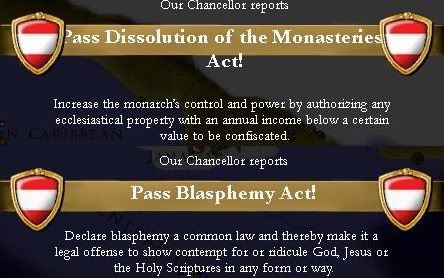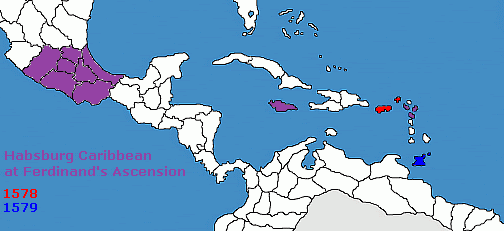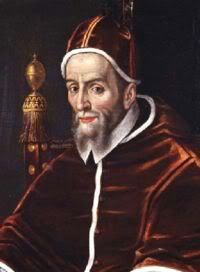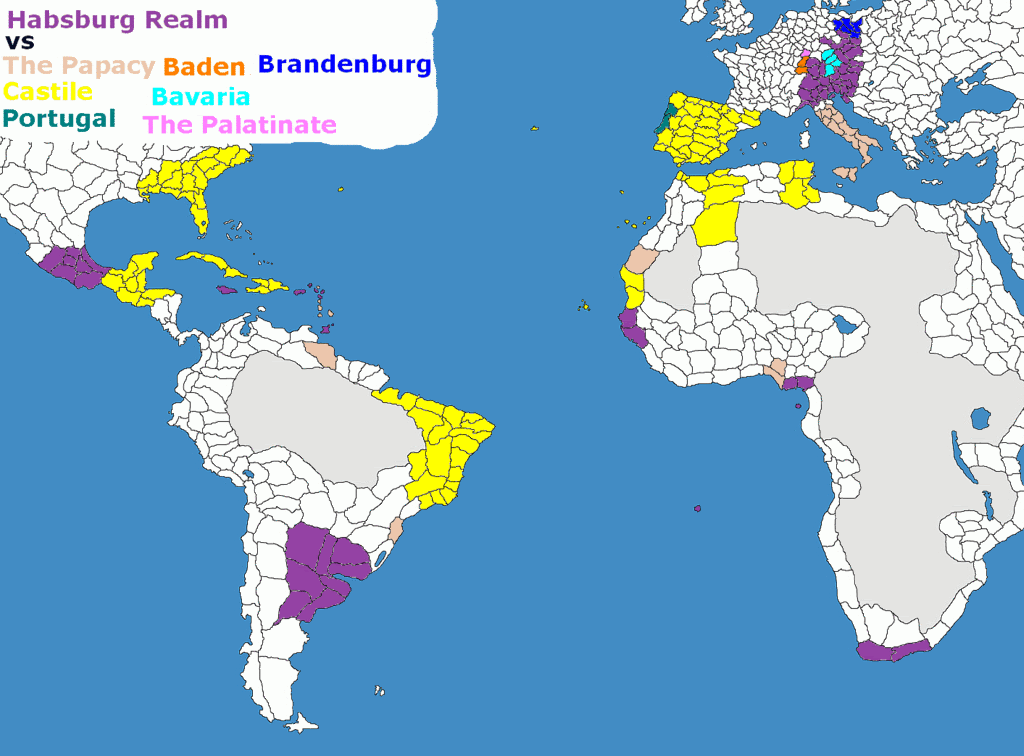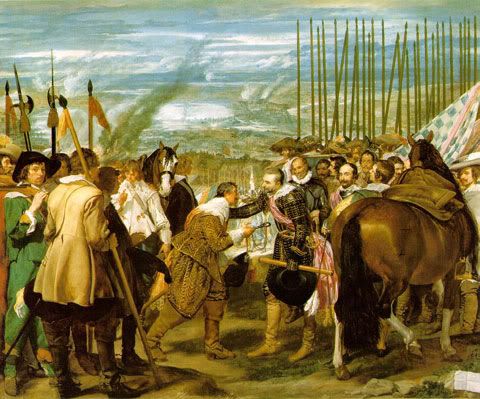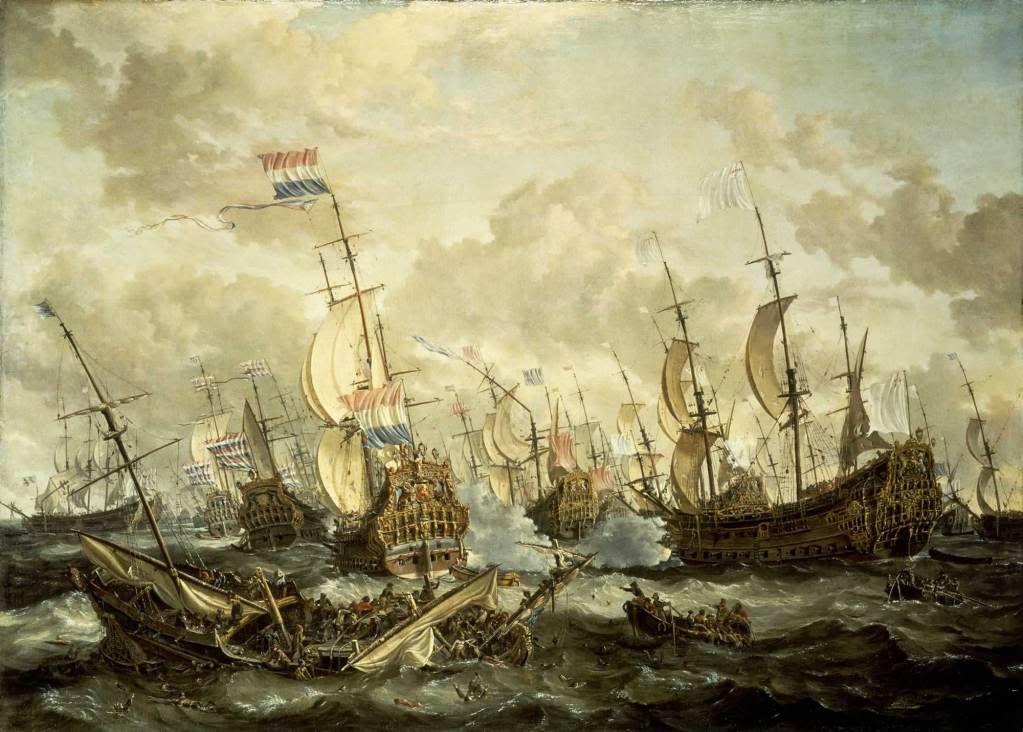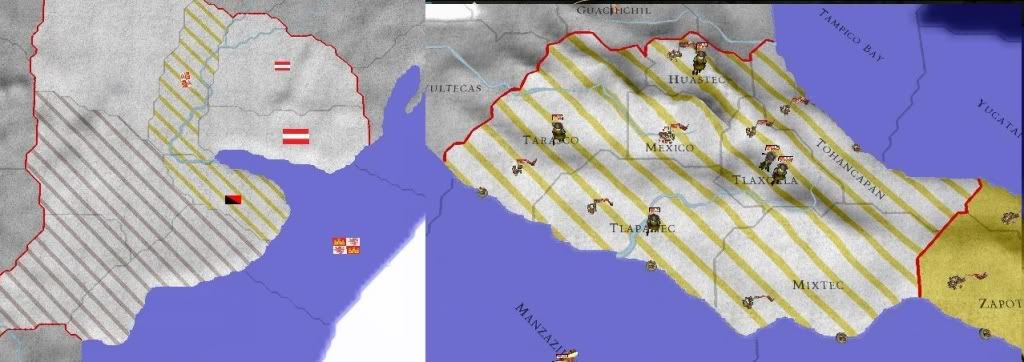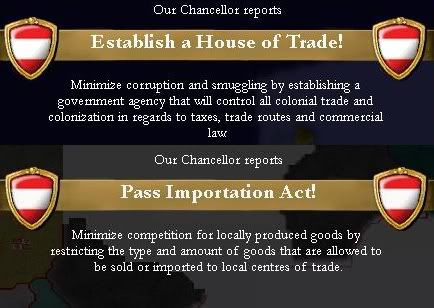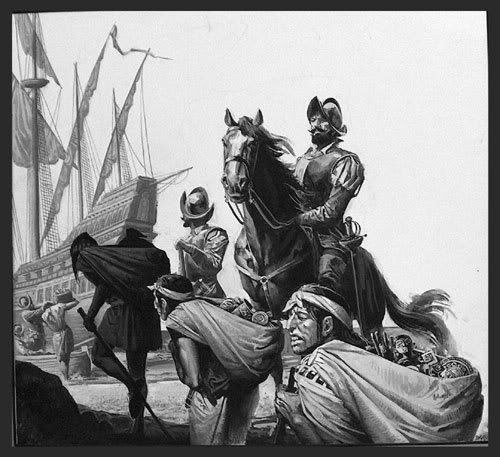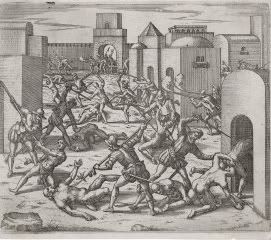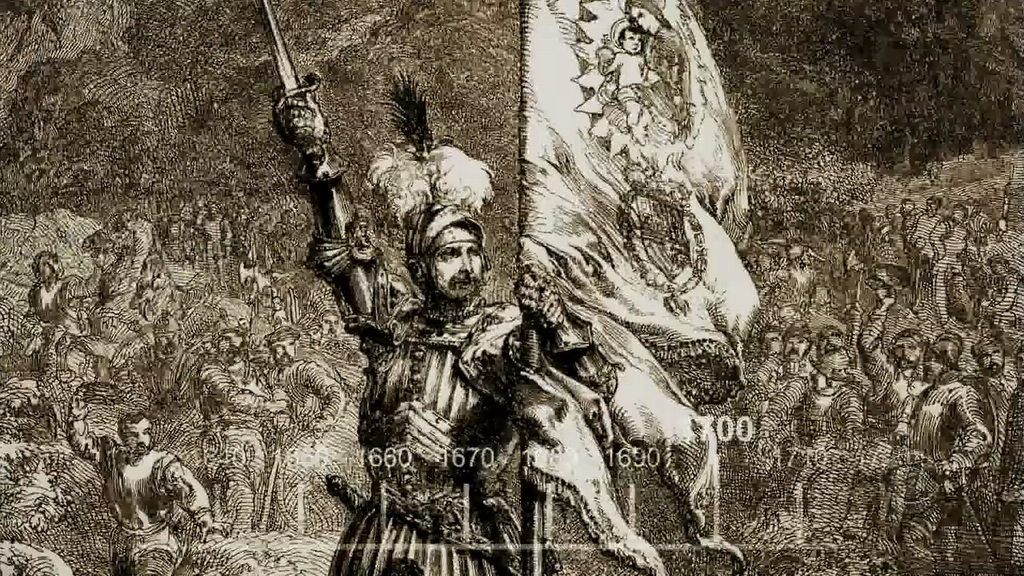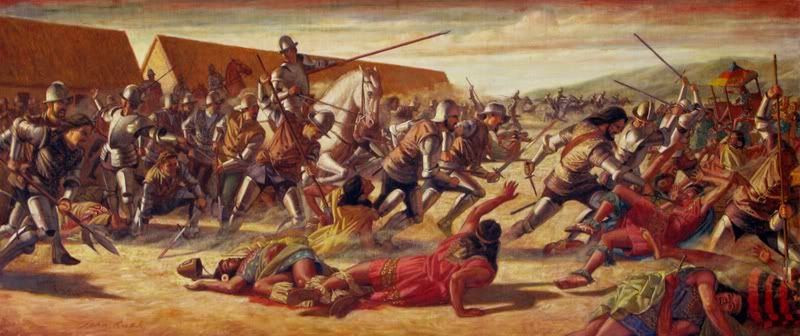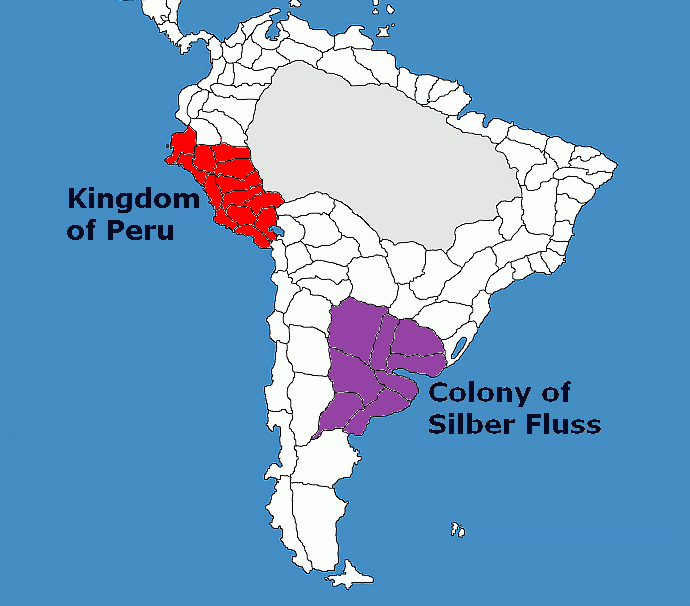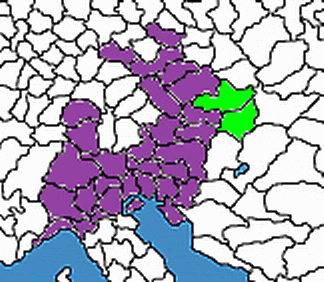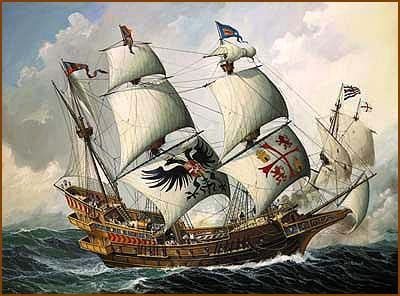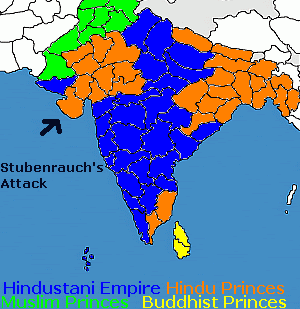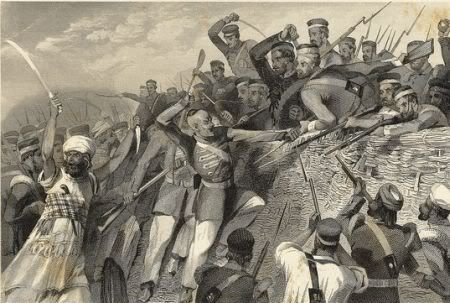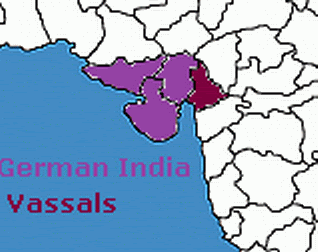Ernst II, the Good
Lived: 1522-1574
Head of House of Habsburg: 1550-1574
Holy Roman Emperor: 1550-1574
Archduke of Austria: 1550-1574
King of Bohemia: 1550-1574
King of Mexico: 1553-1574
Duke of Lombardy, Thuringia and Brunswick: 1550-1574

Ernst II grew up in the court of Luther, surrounded and educated by fanatical Lutherans, he would be the first Emperor to be crowned in a Protestant ceremony. Upon his succession although the Habsburg realm was largely Lutheran it was still going through a chaotic time and was sorely divided with Catholic, Nationalist and Parliamentary groups all aiming to undermine the Emperor’s authority. But Ernst managed to solidify his nation under his control, in no small part thanks to the vast treasures that flooded across the Atlantic into Imperial coffers.
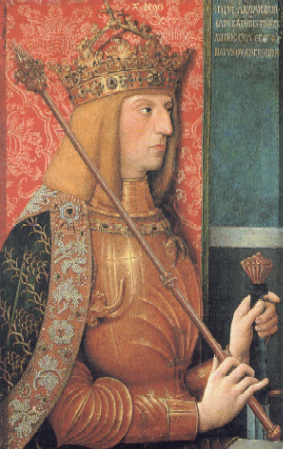
The first few years of Ernst’s reign saw the collapse of the long, unstable and bloody Rule of the Saints. After Luther’s death in 1548 the Lutheran ecclesiastical government had gone into chaos as numerous successors vied for the power once held by the troublesome priest. The government was only held together thanks to the failure of Emperor Franz to capitalise on his opportunity to reclaim power. Ernst was a much more forceful character and within weeks of his ascension to supreme power he started to dismantle Luther’s Parliamentary legacy. In the last years of the Protestant rule an Austrian Parliament had been set up, this was quickly dismantled, meanwhile over the course of 1550-1552 Ernst reclaimed the courts, the army, the treasury and all other fields of government. Despite his Lutheran teachings Ernst also adapted what was effectively the Church of the Habsburg realm (Lutheranism was only widespread within Austria). Ernst placed himself at the head of the Church, by tieing control of the Church with the Habsburg Monarchy Ernst effectively ensured the Church’s loyalty to the Monarchy. By 1552 Lutheran’s Jerusalem was dismantled, all that remained of his dream of an ecclesiastical Empire was the faith of its inhabitants.
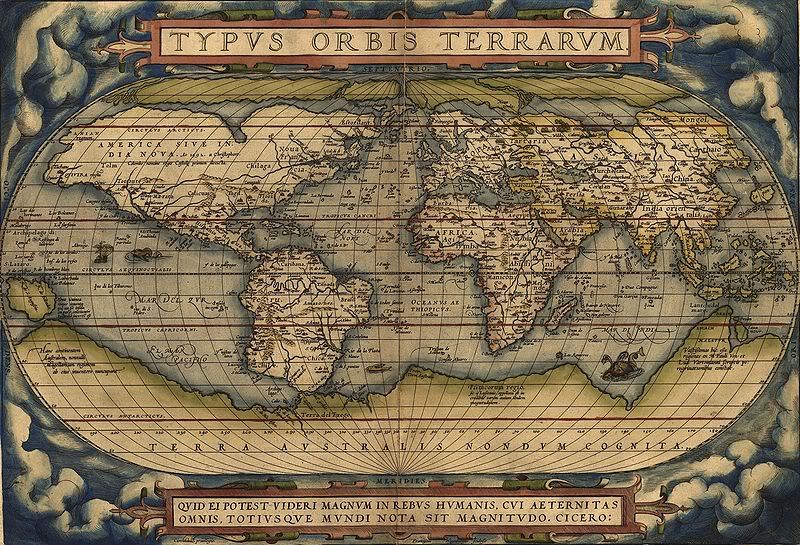
But Ernst’s rule is most remembered as the time when Austria went global. Austria had held colonies in Africa since the 15th Century and during the reign of Luther and Franz private individuals had started to setup colonies across the Atlantic but it wasn’t until the reign of Ernst that the Habsburg government through its weight into the endeavour.
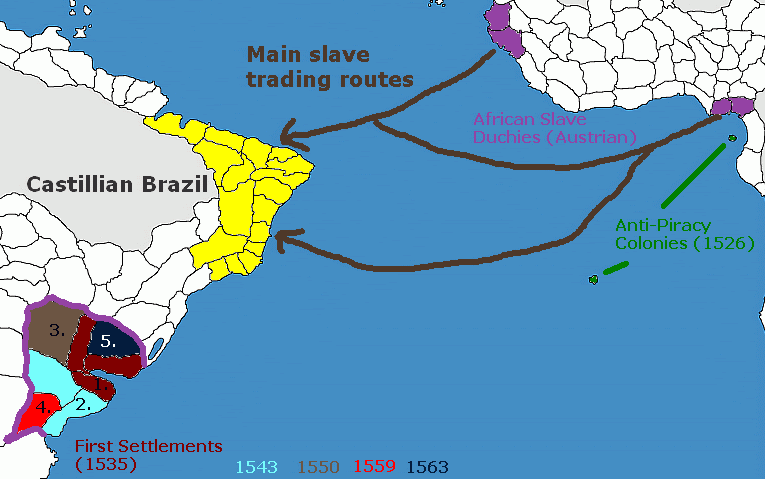
Ever since their foundation at the end of the 15th Century the Austrian African Duchies had been making many Austrian merchants obscenely wealthy as the slave trade brought them massive fortunes. During the 1510s and 1520s the main source of demand for Austria’s slaves shifted from Castile’s Caribbean colonies to the vast, newly founded, colony of Brazil. This turned the problem of piracy (which in the Caribbean had been merely a nuisance thanks to the Castilian fleet) into a major issue. In an attempt to lessen the problem the Austrian West India Trading Company established bases on the South Atlantic islands of St Helena and Fernando Po in 1526. These bases were in turn used by company and government ships to protect the vital slave trading routes. The increased contact with the Castilians in South America led to stories being filtered through to the Germans that there lied a wealthy land somewhere to the South of Brazil. These stories of a land of milk and honey led Friedrich Kolin, the disenfranchised 2nd son of the Duke of Niger and a descendent of the legendary Kolin brothers, to set off on an expedition to find the land. In 1533 discovered the fertile estuary of the Silber Fluss (an area that the Spanish would come to call the Rio de La Plata). Two years later Friedrich Kolin returned to the Silber Fluss with several hundred Austrians (fleeing the wars in their homeland) and established a series of small hamlets around the mighty river. Within a few years the population of the Silber Fluss colony had skyrocketed and Friedrich (now Duke of the Silber Fluss) decided to offer migrants free land on the fertile plain of the Pampas. This led to a steady westward push of the colony from the Silber Fluss itself. In 1555 the territorial expansion of the German immigrants became too much for the local population to accept and several thousand local tribesmen moved to force the Europeans back into the sea. Quickly the Pampas was overrun and the natives even managed to attack some of the towns along the Silber Fluss. In exchange for having his lands officially annexed by the Habsburg state Friedrich received military aid and the natives were quickly defeat, forced to recognise Austrian rule over a wide area (the last territories of which were not settled until 1563). Friedrich and his family were allowed to remain the Dukes of the Silber Fluss but unlike in the West African colonies the state was the main power rather than locally based merchant-nobility.
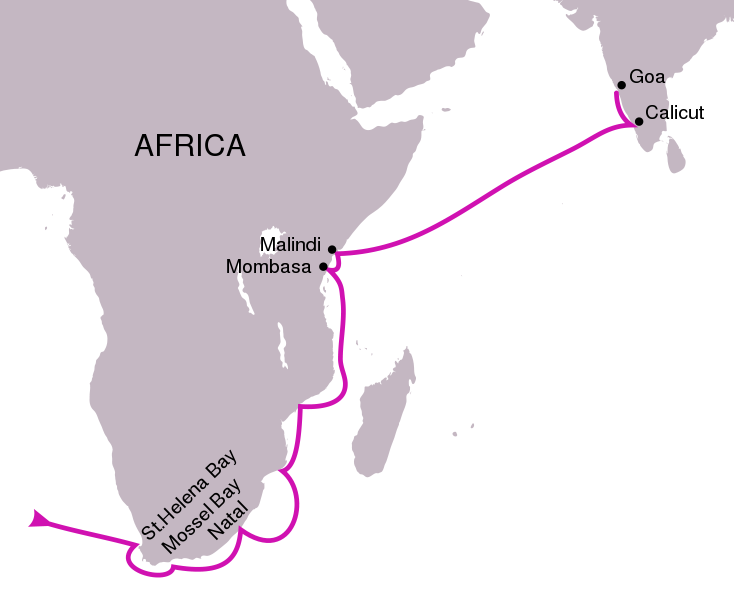
During the 15th Century Europe’s ancient trade routes with China and India came under threat. The violent end of the Pax Mongolia coupled with the rise of the Aydin Turkish Empire (which captured Constantinople in 1510) strangled overland trade at a time when the demand for Asian goods was rising. It was for these reasons that the Castilians had first crossed the Atlantic in search of India and it was these reasons that Vasco da Gama had sailed around Africa on his way to India. Ever since that fateful voyage at the very end of the 15th Century trade around the Cape of Good Hope had exploded. Iberian merchants travelled around Africa to India in their hundreds, it was clearly only a matter of time before a trading station was setup at the Cape itself.
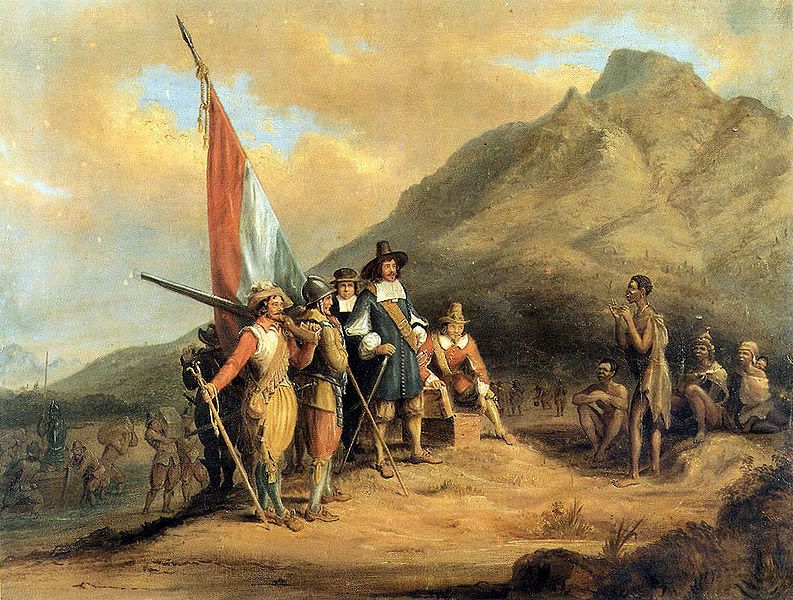
This was done in 1556 by an Austro-Dutch coalition. A large of Dutch merchants and settlers had travelled to the Cape, using Austrian ships. Once at the Cape they were allowed to setup their colony (Cape Town) on the condition that they pay taxation to the Habsburg crown, recognise their status as a part of the Habsburg Empire and swear loyalty to their overlords in Vienna. In exchange for this they were given funds to help construct a harbour, military protection from natives, jealous European and pirates. The people of the Cape Colony, who would latter call themselves Afrikaners, were made of a strange mix of Dutch, German and Bantu cultures.
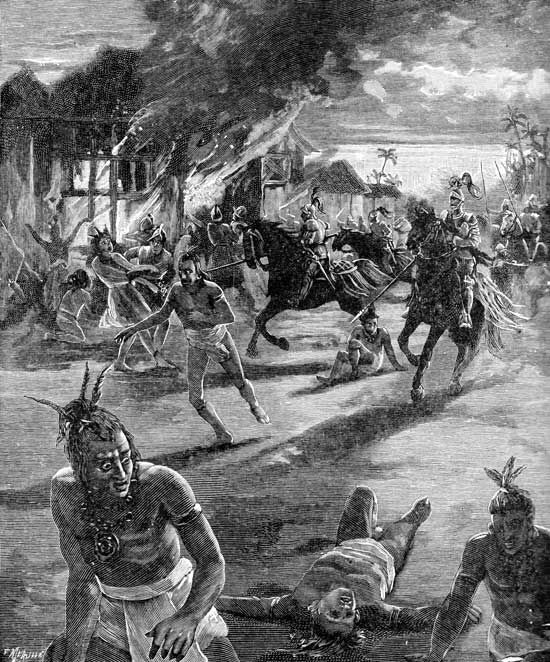
At the outset of his reign Ernst knew the one thing he needed to succeed – gold. During the 1540s the Spanish had conquered the Yucatan Peninsula from a series of powerful local City-States (many of the Mayan Cities dwarfed those of Europe). Since then Castile had been a flush with gold. However news had quickly spread to the main trading partner of the Spanish – Austria – that there existed an even wealthier native nation to the West – the Aztec Empire. At a time when he was still vying for power with the Lutheran government Ernst went against the advice of his political rivals and funded an expedition to Mesoamerica. Hermann Kersting, the Emperor’s most capable General, was given 2,000 foot soldiers, 1,000 horsemen and a battalion of cannon and tasked with conquering the mythical Aztec Empire. Kersting arrived in the Spanish Yucatan in March 1551 and quickly crossed the Castilian colony’s Western border. After only a few months Kersting had destroyed several local tribes and established a strong foothold in Mexico. Thus Kersting was very surprised when the Aztec Emperor Montezuma offered him congratulations and gold for his actions. Kersting had actually been fighting the greatest enemies of the Aztecs – the Zapotec and Montezuma believed that Kersting would help bring stability to the region. As a means of establishing diplomatic relations with the new arrivals Montezuma invited Kersting and his men to his capital at Tenochtitlan.
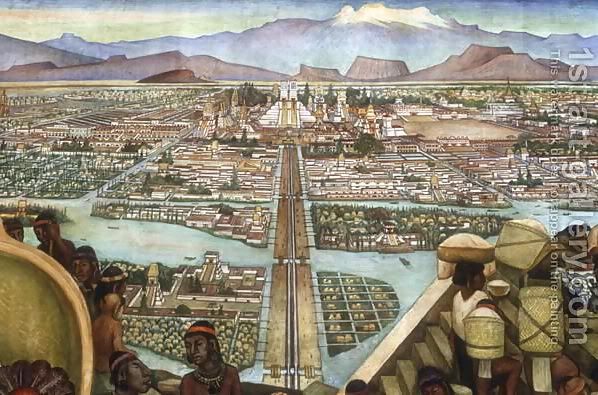
Tenochtitlan was incredible, centred on a magnificent pyramid the city dwarfed anything seen in Europe in both size and splendour. Yet Kersting’s awe soon turned to anguish after he witness the human sacrifice of dozens of captured Zapotecs, in a ceremony done in his honour. Kersting left the Aztec capital convinced that he was faced with an evil Empire. In early 1552 he invaded the Aztec Empire. At first the Aztecs were confused – believing Kersting to be an ally, even a vassal. But quickly their confusion was dispelled after Kersting destroyed a series of Aztec controlled cities.
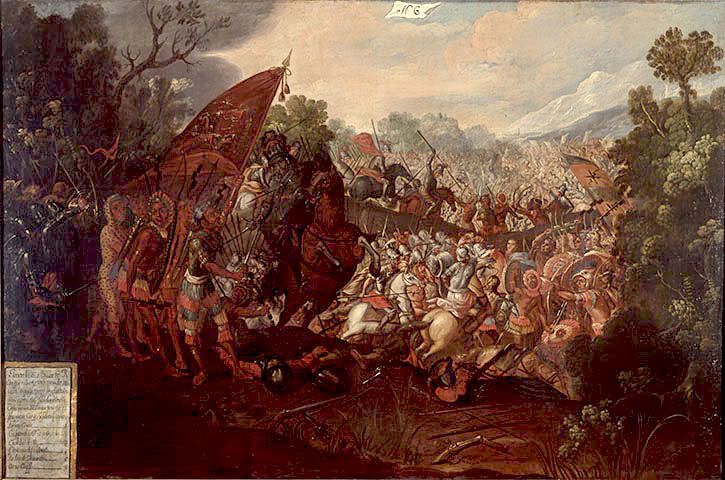
At the Battle of Otumba Kersting’s men along with many thousands of local allies (eager to throw off the yoke of Aztec rule) crushed the Aztec Imperial army and captured Emperor Montezuma. Kersting then used Montezuma to gain access to the Aztec capital which he subsequently had burned to the ground. Without their Emperor or great city the Aztec state quickly went into collapse and Kersting help provoke a succession dispute by executing Montezuma. By then end of 1553 Austria had firmly established itself as the ruler of Mexico. As a symbol of his triumph Ernst had himself crowned King of Mexico (he rejected the proposal of being named an Emperor to avoid devaluing his Roman Imperial title). The Kingdom of Mexico was the first European style Kingdom to be created in the New World.

Kersting’s work in Mexico did not finish with his conquest. For decades to come he and many other Austrians would bleed Mexico dry as they spread the Lutheran faith, introduced epidemics like smallpox, worked the people to death and extracted gold on an ungodly scale.
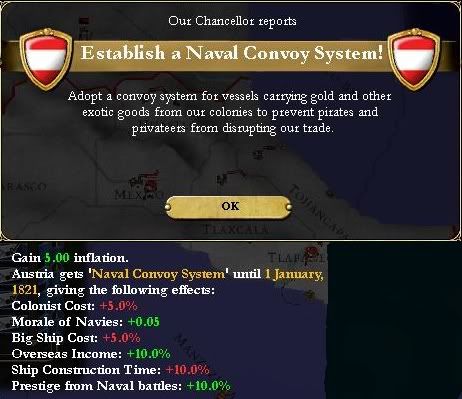
Following the conquest of the Kingdom of Mexico Austria decided to look into breaking the Castilian monopoly in the Caribbean. Unlike the Castilians who had focussed on the large islands of Cuba and Hispaniola (along with mainland territories) Austria established its colonies on smaller, more manageable, islands in the Lesser Antilles and Jamaica. In these new Caribbean Colonies Austrian settlers were able to grow high value luxury goods such as sugar, tobacco and coffee. The new colonies also broke the monopoly the Spanish had previously held over these goods.
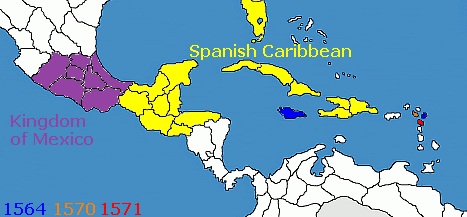
During the early 1570s Ernst invested heavily in the establishment of a convoy system that would protect the transportation of valuable goods from Mexico and the Caribbean back to Austria and would protect the Slave trade between Africa and the New World.

By the end of the reign of Ernst II the Habsburg realm had established a vast Empire overseas. Only Castile was more powerful beyond Europe’s shores and only France was more powerful within Europe itself.
Lived: 1522-1574
Head of House of Habsburg: 1550-1574
Holy Roman Emperor: 1550-1574
Archduke of Austria: 1550-1574
King of Bohemia: 1550-1574
King of Mexico: 1553-1574
Duke of Lombardy, Thuringia and Brunswick: 1550-1574

Ernst II grew up in the court of Luther, surrounded and educated by fanatical Lutherans, he would be the first Emperor to be crowned in a Protestant ceremony. Upon his succession although the Habsburg realm was largely Lutheran it was still going through a chaotic time and was sorely divided with Catholic, Nationalist and Parliamentary groups all aiming to undermine the Emperor’s authority. But Ernst managed to solidify his nation under his control, in no small part thanks to the vast treasures that flooded across the Atlantic into Imperial coffers.

The first few years of Ernst’s reign saw the collapse of the long, unstable and bloody Rule of the Saints. After Luther’s death in 1548 the Lutheran ecclesiastical government had gone into chaos as numerous successors vied for the power once held by the troublesome priest. The government was only held together thanks to the failure of Emperor Franz to capitalise on his opportunity to reclaim power. Ernst was a much more forceful character and within weeks of his ascension to supreme power he started to dismantle Luther’s Parliamentary legacy. In the last years of the Protestant rule an Austrian Parliament had been set up, this was quickly dismantled, meanwhile over the course of 1550-1552 Ernst reclaimed the courts, the army, the treasury and all other fields of government. Despite his Lutheran teachings Ernst also adapted what was effectively the Church of the Habsburg realm (Lutheranism was only widespread within Austria). Ernst placed himself at the head of the Church, by tieing control of the Church with the Habsburg Monarchy Ernst effectively ensured the Church’s loyalty to the Monarchy. By 1552 Lutheran’s Jerusalem was dismantled, all that remained of his dream of an ecclesiastical Empire was the faith of its inhabitants.

But Ernst’s rule is most remembered as the time when Austria went global. Austria had held colonies in Africa since the 15th Century and during the reign of Luther and Franz private individuals had started to setup colonies across the Atlantic but it wasn’t until the reign of Ernst that the Habsburg government through its weight into the endeavour.

Ever since their foundation at the end of the 15th Century the Austrian African Duchies had been making many Austrian merchants obscenely wealthy as the slave trade brought them massive fortunes. During the 1510s and 1520s the main source of demand for Austria’s slaves shifted from Castile’s Caribbean colonies to the vast, newly founded, colony of Brazil. This turned the problem of piracy (which in the Caribbean had been merely a nuisance thanks to the Castilian fleet) into a major issue. In an attempt to lessen the problem the Austrian West India Trading Company established bases on the South Atlantic islands of St Helena and Fernando Po in 1526. These bases were in turn used by company and government ships to protect the vital slave trading routes. The increased contact with the Castilians in South America led to stories being filtered through to the Germans that there lied a wealthy land somewhere to the South of Brazil. These stories of a land of milk and honey led Friedrich Kolin, the disenfranchised 2nd son of the Duke of Niger and a descendent of the legendary Kolin brothers, to set off on an expedition to find the land. In 1533 discovered the fertile estuary of the Silber Fluss (an area that the Spanish would come to call the Rio de La Plata). Two years later Friedrich Kolin returned to the Silber Fluss with several hundred Austrians (fleeing the wars in their homeland) and established a series of small hamlets around the mighty river. Within a few years the population of the Silber Fluss colony had skyrocketed and Friedrich (now Duke of the Silber Fluss) decided to offer migrants free land on the fertile plain of the Pampas. This led to a steady westward push of the colony from the Silber Fluss itself. In 1555 the territorial expansion of the German immigrants became too much for the local population to accept and several thousand local tribesmen moved to force the Europeans back into the sea. Quickly the Pampas was overrun and the natives even managed to attack some of the towns along the Silber Fluss. In exchange for having his lands officially annexed by the Habsburg state Friedrich received military aid and the natives were quickly defeat, forced to recognise Austrian rule over a wide area (the last territories of which were not settled until 1563). Friedrich and his family were allowed to remain the Dukes of the Silber Fluss but unlike in the West African colonies the state was the main power rather than locally based merchant-nobility.

During the 15th Century Europe’s ancient trade routes with China and India came under threat. The violent end of the Pax Mongolia coupled with the rise of the Aydin Turkish Empire (which captured Constantinople in 1510) strangled overland trade at a time when the demand for Asian goods was rising. It was for these reasons that the Castilians had first crossed the Atlantic in search of India and it was these reasons that Vasco da Gama had sailed around Africa on his way to India. Ever since that fateful voyage at the very end of the 15th Century trade around the Cape of Good Hope had exploded. Iberian merchants travelled around Africa to India in their hundreds, it was clearly only a matter of time before a trading station was setup at the Cape itself.

This was done in 1556 by an Austro-Dutch coalition. A large of Dutch merchants and settlers had travelled to the Cape, using Austrian ships. Once at the Cape they were allowed to setup their colony (Cape Town) on the condition that they pay taxation to the Habsburg crown, recognise their status as a part of the Habsburg Empire and swear loyalty to their overlords in Vienna. In exchange for this they were given funds to help construct a harbour, military protection from natives, jealous European and pirates. The people of the Cape Colony, who would latter call themselves Afrikaners, were made of a strange mix of Dutch, German and Bantu cultures.

At the outset of his reign Ernst knew the one thing he needed to succeed – gold. During the 1540s the Spanish had conquered the Yucatan Peninsula from a series of powerful local City-States (many of the Mayan Cities dwarfed those of Europe). Since then Castile had been a flush with gold. However news had quickly spread to the main trading partner of the Spanish – Austria – that there existed an even wealthier native nation to the West – the Aztec Empire. At a time when he was still vying for power with the Lutheran government Ernst went against the advice of his political rivals and funded an expedition to Mesoamerica. Hermann Kersting, the Emperor’s most capable General, was given 2,000 foot soldiers, 1,000 horsemen and a battalion of cannon and tasked with conquering the mythical Aztec Empire. Kersting arrived in the Spanish Yucatan in March 1551 and quickly crossed the Castilian colony’s Western border. After only a few months Kersting had destroyed several local tribes and established a strong foothold in Mexico. Thus Kersting was very surprised when the Aztec Emperor Montezuma offered him congratulations and gold for his actions. Kersting had actually been fighting the greatest enemies of the Aztecs – the Zapotec and Montezuma believed that Kersting would help bring stability to the region. As a means of establishing diplomatic relations with the new arrivals Montezuma invited Kersting and his men to his capital at Tenochtitlan.

Tenochtitlan was incredible, centred on a magnificent pyramid the city dwarfed anything seen in Europe in both size and splendour. Yet Kersting’s awe soon turned to anguish after he witness the human sacrifice of dozens of captured Zapotecs, in a ceremony done in his honour. Kersting left the Aztec capital convinced that he was faced with an evil Empire. In early 1552 he invaded the Aztec Empire. At first the Aztecs were confused – believing Kersting to be an ally, even a vassal. But quickly their confusion was dispelled after Kersting destroyed a series of Aztec controlled cities.

At the Battle of Otumba Kersting’s men along with many thousands of local allies (eager to throw off the yoke of Aztec rule) crushed the Aztec Imperial army and captured Emperor Montezuma. Kersting then used Montezuma to gain access to the Aztec capital which he subsequently had burned to the ground. Without their Emperor or great city the Aztec state quickly went into collapse and Kersting help provoke a succession dispute by executing Montezuma. By then end of 1553 Austria had firmly established itself as the ruler of Mexico. As a symbol of his triumph Ernst had himself crowned King of Mexico (he rejected the proposal of being named an Emperor to avoid devaluing his Roman Imperial title). The Kingdom of Mexico was the first European style Kingdom to be created in the New World.

Kersting’s work in Mexico did not finish with his conquest. For decades to come he and many other Austrians would bleed Mexico dry as they spread the Lutheran faith, introduced epidemics like smallpox, worked the people to death and extracted gold on an ungodly scale.

Following the conquest of the Kingdom of Mexico Austria decided to look into breaking the Castilian monopoly in the Caribbean. Unlike the Castilians who had focussed on the large islands of Cuba and Hispaniola (along with mainland territories) Austria established its colonies on smaller, more manageable, islands in the Lesser Antilles and Jamaica. In these new Caribbean Colonies Austrian settlers were able to grow high value luxury goods such as sugar, tobacco and coffee. The new colonies also broke the monopoly the Spanish had previously held over these goods.

During the early 1570s Ernst invested heavily in the establishment of a convoy system that would protect the transportation of valuable goods from Mexico and the Caribbean back to Austria and would protect the Slave trade between Africa and the New World.

By the end of the reign of Ernst II the Habsburg realm had established a vast Empire overseas. Only Castile was more powerful beyond Europe’s shores and only France was more powerful within Europe itself.



